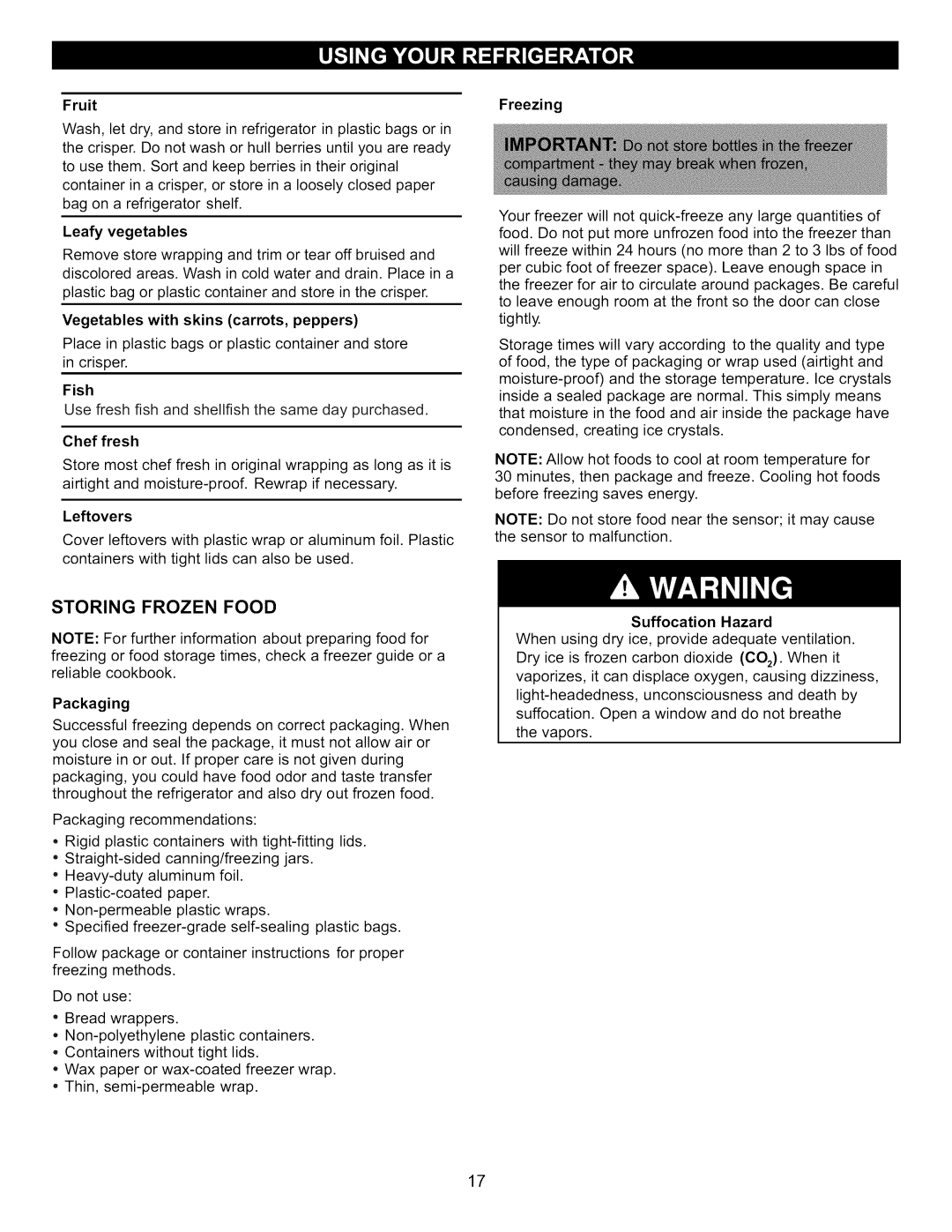
Fruit
Wash, let dry, and store in refrigerator in plastic bags or in the crisper. Do not wash or hull berries until you are ready to use them. Sort and keep berries in their original container in a crisper, or store in a loosely closed paper bag on a refrigerator shelf.
Leafy vegetables
Remove store wrapping and trim or tear off bruised and discolored areas. Wash in cold water and drain. Place in a
plastic bag or plastic container and store in the crisper.
Vegetables with skins (carrots, peppers)
Place in plastic bags or plastic container and store in crisper.
Fish
Use fresh fish and shellfish the same day purchased.
Chef fresh
Store most chef fresh in original wrapping as long as it is airtight and
Leftovers
Cover leftovers with plastic wrap or aluminum foil. Plastic containers with tight lids can also be used.
Freezing
Your freezer will not
will freeze within 24 hours (no more than 2 to 3 Ibs of food per cubic foot of freezer space). Leave enough space in the freezer for air to circulate around packages. Be careful to leave enough room at the front so the door can close tightly.
Storage times will vary according to the quality and type of food, the type of packaging or wrap used (airtight and
NOTE: Allow hot foods to cool at room temperature for 30 minutes, then package and freeze. Cooling hot foods before freezing saves energy.
NOTE: Do not store food near the sensor; it may cause the sensor to malfunction.
STORING FROZEN FOOD
NOTE: For further information about preparing food for freezing or food storage times, check a freezer guide or a reliable cookbook.
Packaging
Successful freezing depends on correct packaging. When you close and seal the package, it must not allow air or moisture in or out. If proper care is not given during packaging, you could have food odor and taste transfer throughout the refrigerator and also dry out frozen food.
Packaging recommendations:
•Rigid plastic containers with
•
•
,
,
•Specified
Follow package or container instructions for proper freezing methods.
Do not use:
•Bread wrappers.
•
•Containers without tight lids.
•Wax paper or
•Thin,
Suffocation Hazard
When using dry ice, provide adequate ventilation. Dry ice is frozen carbon dioxide (CO2). When it vaporizes, it can displace oxygen, causing dizziness,
the vapors.
17
